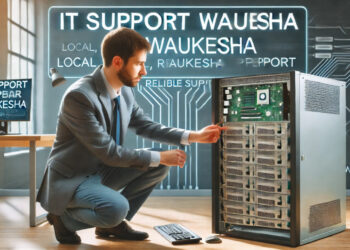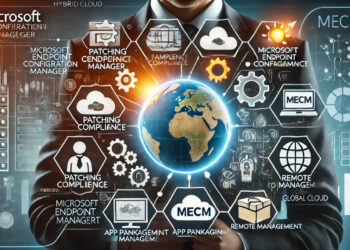Data centers are vital for many businesses, and a serious data breach can be costly. Following best practices and the latest technologies is essential to protect your data.
The first step in protecting a data center is ensuring the building is secure from external threats. This includes physical security measures such as on-site video surveillance, safety guards, and metal detectors.
Physical Security
Physical security is an essential component of data center security. It prevents unauthorized access to servers and networks that can result in data loss and equipment damage.
It also helps protect sensitive material control areas from third parties and internal members with unrestricted access. Hence, it is essential to implement proper physical security practices and the latest technologies in data centers.
In addition to physical barriers, data center components should have access control systems and surveillance cameras that monitor entry and exit points. This ensures that only authorized employees can enter the space and avoids the “fox-in-the-chickenhouse” problem, where a malicious person can access the entire building after breaching the outer perimeter.
For example, a data center can use biometric identification devices to verify fingerprints or irises to access secure areas. Moreover, it can limit access to specific computer rooms by using radio frequency identification, turnstiles, or other verification methods.
Lastly, it is essential to regularly test your physical security controls and procedures to avoid any weak points that could lead to security breaches or intrusions. This will help you detect any weaknesses in your system and implement new plans to cover them. It also gives you valuable information to report to law enforcement if there is a breach or threat.
Network Security
Data centers are crucial to businesses, storing valuable company information such as proprietary and customer data. Consequently, they require both physical practices and virtual technologies to protect their data from outside threats.
For instance, data center security measures can include multi-factor authentication to confirm the identity of an authorized user and firewalls that prevent unauthorized access to the network. Similarly, the latest security software can keep track of all users and determine which ones should have access to the data center.
Another way that administrators can strengthen data center security is by using segmentation. Creating secure zones within the network helps keep sensitive systems separate from those that may not be receiving timely patch updates.
Building management systems (BMS) are a newer addition to a data center’s infrastructure, managing everything from airflow and temperature to access control and fire alarm systems. Unfortunately, these devices often don’t come with security patches, making them easy targets for hackers.
Aside from using BMS, administrators can also install a security information and event management (SIEM) system that offers real-time visibility into every facet of their data center. This increases their ability to detect suspicious activity and respond quickly to it.
In addition, it can help improve post-incident response times and forensics. By analyzing traffic and alerting on anomalies, data centers can detect suspicious events early on, reducing the impact of any damage.
Application Security
As organizations shift their application workloads between on-premises data centers and cloud environments, the need for consistent security across multi-cloud infrastructures is more significant than ever. This requires delivering security services at multiple points, including the perimeter, network fabric, and host.
Using best practices and the latest technologies in data center security can help organizations safeguard their most valuable assets. These include using security policies to prevent unauthorized access, employing next-generation firewalls and intrusion detection systems, implementing two-factor authentication, and monitoring and auditing the use of employee login credentials.
A data center is a facility that houses a business’s computers, networking equipment, and storage systems. It is a vital part of any company’s daily operations.
However, a data center is also a target for hackers looking to steal information from an organization. These attacks usually begin with an employee’s login credentials. A hacker may infect an endpoint device with malware or use phishing to trick employees into providing their login credentials.
As a result, employees must be given limited access to company resources to protect data from unintended exploitation. This is where a zero-trust approach comes into play. A security system that monitors all access points will alert managers of suspicious activity and permit only authorized personnel to enter the data center. Other measures to consider are video surveillance, securing CCTV footage, and employing access management tools that restrict employees’ access to certain areas.
Data Security
Data center security has become an ever-growing issue as technology evolves and businesses rely on virtualization and cloud technologies. The number of highly publicized cyberattacks and data breaches in the past year has made it clear that securing the data center has never been more critical.
To effectively protect their data centers, providers must adopt best practices and the latest technologies in data security. This includes using perimeter-based tools to monitor and defend their networks against internal and external threats.
It also involves deploying network segmentation to simplify policy enforcement and minimize the attack surface by containing potential threats in a single subnet. Deploying GlobalProtect in internal mode as a gateway to control access to the data center helps protect against lateral movement of malware by checking user and host information to verify that they meet your security standards.
Lastly, security guards need to be well-trained to enforce physical security controls. They should interact with penetration testers and practice implementing these controls.
Data centers must proactively secure their physical spaces, especially in light of the recent global pandemics, January 6th attacks, and wars in Ukraine and Syria. These events have caused many providers to rethink their approaches to physical security.







